Research
Product Description:
Prosmed tablets are specialized phytotherapy for LUTS associated with BPH, Bladder, and Non-bacterial prostatitis. It consists of the following thoroughly researched ingredients
- Saw Palmetto (DSC) 320 mg
- Pygeum Africanum (DSC) 20 mg
- Pumpkin Seed Oil (GP) 120 mg
SAW PALMETTO
Introduction:
Saw Palmetto is a supplement which is derived from the fruit of the plant Serenoa repens. SPEs (Saw Palmetto Extracts) contain numerous fatty acids, mostly in triglyceride form, and phytosterols.
Biologically Active Constituents:
- Oleic acid: (Z)-9-octadecenoic acid (C18:1 n-9) [1]
- Lauric Acid: dodecanoic acid (C12:0) [1]
- Beta-Sitosterol (a phytosterol) [1]
We import SPE from FDA approved herbal extract manufacturer, standardized at 40% Fatty Acids. [COA, MOA, and Reference Monograph Available on request]
- [https://www.ncbi.nlm.nih.gov/pubmed/18677464] (2008 Study)
Mechanism of Action:
Alpha1-Adrenoceptor Inhibitory Properties:
SPEs have Alpha1-adrenoceptor-inhibitory properties. This reduction of ligand binding is thought to occur through a non-competitive mechanism, as SPEs appeared to reduce the total number of binding sites on α1-adrenergic receptors and (when tested in isolation) signaling through the receptor. [2] [3]
2 [https://www.ncbi.nlm.nih.gov/pubmed/10068345] (1999 Study)
3 [https://www.ncbi.nlm.nih.gov/pubmed/17572227] (2007 Study)
Take Away:
- This might be one of the reasons SPEs have been shown to IMPROVE effects of “Tamsulosin” and other Alpha Blockers according to latest research studies.
Study using saw palmetto alongside tamsulosin (α1-adrenergic receptor antagonist) over 6-12 months in men with BPH found combination therapy more effective than tamsulosin alone [4]
Combination therapy with selenium (50mcg) and lycopene (5mg) alongside the supercritical extract of saw palmetto (320mg) appeared to perform equally to 400mcg tamsulosin after a year in improving urinary symptoms; [5] adding tamsulosin to this combination therapy further increased benefits. [5]
4 [https://www.ncbi.nlm.nih.gov/pubmed/25614155] (2015 Study)
5 [https://www.ncbi.nlm.nih.gov/pubmed/25154739] (2014 Study)
Another early double-blind, placebo-controlled study of 320mg SPE daily found significant improvement in many symptoms of BPH over placebo.[7] A later retrospective study in men with urinary symptoms caused by BPH (no prostatic cancer and PSA less than 10ng/mL) given 320mg SPE for six months confirmed this.[6] It found an improvement in urinary symptoms when SPE was used alone as well as when used alongside an alpha-blocker, although SPE alone showed better responses on mean void volume and intermittence in urinary flow while combination therapy had a more rapid improvement in maximum flow.[6]
7 https://www.ncbi.nlm.nih.gov/pmc/articles/PMC1463641/ (Study 1984)
6 https://www.ncbi.nlm.nih.gov/pubmed/23210402 (Study 2012)
Anti-Cholinergic Effects:
Anti-Cholinergic drugs decrease contractions of bladder and are usually used for over-active bladder symptoms. However, there’s is a risk of retention when prescribing anti-cholinergic drugs. Oleic & Lauric acids in Saw palmetto are muscarinic antagonists, decrease total binding affinity of NMS in the bladder detrusor muscle and the brain. Therefore, PROSMED acts like an anti-cholinergic. but is far less potent as compared to other anti-cholinergic drugs. This makes PROSMED anti-cholinergic effect slow in on-set but far more safe as it is less likely to cause complete retention.
Oleic acid and lauric acid obtained from saw palmetto, as well as reference standards of these two fatty acids, appear to have affinity for muscarinic receptors with IC50 values (for reducing binding of N-methylscopolamine (NMS) in brain tissue) of 70.6-91.3µg/mL and 157-163µg/mL respectively. [7]
Ingestion of SPE has been found to decrease the Bmax (total binding affinity) of NMS in the bladder at all tested doses. [8]
7 [https://www.ncbi.nlm.nih.gov/pubmed/19359798] (2009 Study)
8 [https://www.ncbi.nlm.nih.gov/pubmed/17572227] (2007 Study)
Potential Benefits:
- Over Active Bladder Symptoms
- Nocturia
- Frequency of Urination
- Can be prescribed as an alternative to Anti-Colinergics in patients with mild symptoms because PROSMED is much safer in long-term as its action is mild and there’s no risk of retention.
One early trial found that saw palmetto increases urine flow and decreases nocturia in patients with BPH. [9]
9 [https://www.ncbi.nlm.nih.gov/pubmed/11276294]
Anti-inflammatory Activity of Saw Palmetto:
An anti-inflammatory effect has been noted with SPE, in human prostate cells (BPH-1, WPMY-1, and PC3) by reducing the expression and content of chemokine receptor (MCP-1/CCL2) and adhesion factors (VCAM-1). [10] This effect has been replicated in another study using a benign prostatic hyperplasia cell line, where several genes involved in inflammation were downregulated leading to the inflammatory effect of a few cytokines (IL-6, IL-15, and IL-17) being suppressed. [11]
- [https://www.ncbi.nlm.nih.gov/pubmed/22520557] (2012 Study)
- [https://www.ncbi.nlm.nih.gov/pubmed/23846725] (2013 Study)
Take Away:
1. Relief from burning micturition and irritation in the urethra
2. May improve IPSS score because it seems to reduce inflammation in the urethra and bladder, thereby reducing obstruction.
6 https://www.ncbi.nlm.nih.gov/pubmed/23210402 [Study 2012]
Saw Palmetto Extract in Prostate Cancer:
SPE induces glioma cell growth arrest and apoptosis via decreasing PI3K/Akt signal transduction. [12]
12 https://www.ncbi.nlm.nih.gov/pubmed/25009620 (2014 Study)
Adverse Event and Safety of SPE:
Forty articles (26 randomized controlled trials, 4 non-randomized controlled trials, 6 uncontrolled trials and 4 case reports/series) were included. They suggest that adverse events associated with the use of SPE are mild and similar to those with placebo. The most frequently reported adverse events are abdominal pain, diarrhoea, nausea, fatigue, headache, decreased libido and rhinitis.
No drug interactions were reported. Currently available data suggest that S. repens is well tolerated by most users and is not associated with serious adverse events.
- [https://www.ncbi.nlm.nih.gov/pubmed/19591529] (2009 Study)
Closing Summary of SPE:
Today, alpha(1)-adrenoceptor antagonists and muscarinic cholinoceptor antagonists are commonly used in the treatment of men with voiding symptoms secondary to BPH. The improvement of voiding symptoms in patients taking SPE may arise from its binding to pharmacologically relevant receptors in the lower urinary tract, such as alpha(1)-adrenoceptors, muscarinic cholinoceptors, 1,4-dihyropyridine receptors and vanilloid receptors. Thus, SPE at clinically relevant doses may exert a direct effect on the pharmacological receptors in the lower urinary tract, thereby improving urinary dysfunction in patients with BPH and an overactive bladder. SPE does not have interactions with co-administered drugs or serious adverse events in blood biochemical parameters, suggestive of its relative safety, even with long-term intake.
Benefits:
- PROSMED has a NOTABLE EFFECT IN Increasing Overall Quality of Life.
- Improves IPSS over long-term with comparatively lesser side-effects.
Pygeum Africanum
Pygeum Africanum Extract (PAE) is a herbal supplement derived from the bark of the Prunus Africana cherry tree, and has relatively recent usage against BPH but originates from traditional African medicine. It is widely used in European Countries today specially in Italy and France. [14]
14 [https://www.ncbi.nlm.nih.gov/pubmed/16846678] (2007 Study)
1.2. Composition
The bark of Pygeum tends to contain
- N-butylbenzenesulfonamide [15]
- Atraric acid [16]
- β-sitosterol as well as β-sitostenone [17]
- Fatty acids of mostly linoleic acid, palmitic, oleic, and stearic with trace linolenic, lauric, and myristic acid
- Docosanol
- Behenic acid, ursolic acid, and lignoceric acid
- Ferulic acid
- Friedelin
The bioactives are mostly thought to be fatty acids and β-sitosterols, and although the main bioactives are not currently known they are suspected to be the antiandrogenic, N-butylbenzenesulfonamide, Atraric acid, and β-sitosterols. [15] [16] [17] [18] [19] [20] [21]
15 [https://www.ncbi.nlm.nih.gov/pubmed/16783690] (2006 Study)
16 [https://www.ncbi.nlm.nih.gov/pubmed/16773539] (2006 Study)
17 [https://www.ncbi.nlm.nih.gov/pubmed/22795601] (2012 Study)
18 [https://www.ncbi.nlm.nih.gov/pubmed/19281408] (1999 Study)
19 [https://www.ncbi.nlm.nih.gov/pubmed/11962548] (1999 Study)
20 [https://www.sciencedirect.com/science/article/abs/pii/0031942296000386] (1998 Study)
21 [https://www.ncbi.nlm.nih.gov/pubmed/6512546] (1984 Study)
The PAE in PROSMED is imported from an FDA approved facility and is standardized for 40% Phytosterols i.e β-sitosterol & β-sitostenone. [COA, MOA, and Reference Monograph Available on request]
Enzyme Inhibitor and Androgen Receptor Antagonist
Pygeum extract has been found to inhibit the aromatase enzyme, Estrogen synthase enzyme, in vitro with an IC50 value of 780mcg/mL with some efficacy at 100mcg/mL, and a mixture of Pygeum and Stinging nettle failed to significant increase the potency of the IC50 value. [22]
5α-reductase has been found to be inhibited by Pygeum extract with an IC50 of 980mcg/mL. [22]
Androgen Receptors (AR) are present inside prostate cells, and some other tissue, and some cancer cells. Androgens bind to Androgen Receptors inside the cancer cells, which causes cancer cells to grow.
In a competitive ligand binding assay, Pygeum has been found to displace approximately 60% of DHT from the androgen receptor at a concentration of 5uL/mL, with the beta-sitosterol molecule being inactive. [23] The active molecule may be N-butylbenzenesulfonamide, which has been noted elsewhere to be a component of Pygeum [15] and an androgen receptor antagonist [24] although atraric acid is also suspected. [16]
Atraric acid has an IC50 value around 3μM while it exerts no significant inhibitory effect at 0.1μM and at 10μM exerts about 90% inhibition of signaling. [17] N-butylbenzenesulfonamide requires 100μM to exert 90% inhibition and has an IC50 value of approximately 10μM. [25] These potencies are less than the reference drug casodex (IC50 of 1uM [25]) but greater than that of the reference drug flutamide (116uM). [24] [26]
22 [https://www.ncbi.nlm.nih.gov/pubmed/23194959] (1996 Study)
23 [https://www.ncbi.nlm.nih.gov/pubmed/17709901] (2007 Study)
24 [https://www.ncbi.nlm.nih.gov/pubmed/20965230] (2011 Study)
25 [https://www.ncbi.nlm.nih.gov/pubmed/19771394] (2010 Study)
26 [https://www.ncbi.nlm.nih.gov/pubmed/15828836] (2005 Study)
Take Away:
- PROSMED should not be given to Females as it may interact with Estrogen synthesis. [22]
- PROSMED is beneficial in Prostate Cancer both in vitro and in vivo and therefore may be a useful supplement for people at high risk for developing prostate cancer. [23]
- PROSMED may also slow down the growth of the Prostate as PAE has been found to displace DHT from AR and also because PROSMED may act as 5-Alpha-Reductase-Inhibitor as per in Vitro Results of the study. [23] [22]
Inflammation and Immunology
In LPS-activated macrophages, the secretion of IL-6 has been noted to be abolished with PAE, which was not significantly different than dexamethasone as active control; this study was confounded as the Pygeum product was a 4:1 ratio of Saw Palmetto and Pygeum. [27]
27 [https://www.ncbi.nlm.nih.gov/pubmed/22889184] (2012 Study)
Take Away:
- Pygeum has been shown to have Anti-microbial effects on Staphylococcus aureus and Mycobacterium smegmatis and did not show any cytotoxic effect on human-derived macrophage cells. [27]
- Therefore, Pygeum may have a protective effect in some forms of Prostatitis. [27]
- Pygeum displays anti-inflammatory activity similar to Dexamethasone.
- May improve IPSS
- May reduce Burning Micturition and Dysuria.
Interactions with Prostrate
Pygeum extract has been noted to reduce the proliferation of prostatic fibroblasts and myofibroblasts in vitro (surgically obtained) with an ethanolic extract at 25mcg/mL, with near absolute inhibition of basal and both EGF/VEGF induced proliferation at 100mcg/mL. This was then replicated with MDCK cells with dose-dependence also established with significance above 25mcg/mL, [28] and hindering the effects of these two growth factors on prostatic cells has been noted elsewhere [29] as well as hindering the growth promoting effects of IGF-1. [30]
28 https://www.ncbi.nlm.nih.gov/pubmed/17034612
29 https://www.sciencedirect.com/science/article/abs/pii/S0753332209800085
30 https://www.ncbi.nlm.nih.gov/pubmed/9146675
Take Away:
- PROSMED slows down the process of prostate enlargement
One study comparing the efficacy of Pygeum extract on prostatic tissue (obtained surgically) in those with benign prostatic hyperplasia versus normal controls found that the extract, in vitro, was more effective in inhibiting the proliferation of hyperplasic cells (EC50 7.35µg/mL) relative to normal cells (EC50 18.68µg/mL) associated with a 7-fold reduction of TGFB1 mRNA in hyperplasic cells and [31] these anti-proliferative effects have been confirmed in a human (n=1) during a preliminary assessment, where myofibroblast proliferation was reduced although there was no apparent effect on the prostatic epithelial cell line PNT2. [32]
31 https://www.ncbi.nlm.nih.gov/pubmed/20503393
32 https://www.ncbi.nlm.nih.gov/pubmed/22198631
Take Away:
- Prosmed slows down the progression of only hyperplastic cells in the prostate.
Mechanistically, Pygeum may reduce prostatic cell proliferation and appears to be slightly more effective in cells undergoing benigin hyperplasia. Pygeum has been noted to interfere with prostatic growth factors
In regards to prostatic hyperplasia, a 2002 Cochrane meta-analysis [33] was able to note 18 trials comparing Pygeum (17 of which to placebo control) with no comparison against reference drugs; overall, the analysis of studies meeting inclusion criteria (minimal due to lack of extractable data, reducing the total sample of 1562 down to 430) noted that Pygeum was associated with a 19% reduction in nocturia, 24% improvement in residual urine volume, and 23% increase in peak urine flow. Symptoms of benign prostatic hyperplasia, as assessed by physician, were reduced in the Pygeum group relative to placebo (5 trials assessed, 64% of patients reporting an improvement in symptoms in Pygeum relative to 30% in placebo); [33] [34] this meta-analysis is duplicated in Medline (NIH National Library of Medicine’s official website).
33 https://www.ncbi.nlm.nih.gov/pubmed/11869585 (2002)
34 https://www.ncbi.nlm.nih.gov/pubmed/12207439 (2002)
One trial using 50mg of Pygeum extract twice daily for 2 months in an open-label trial has noted that treatment with Pygeum is associated with reduced symptoms of Benign prostatic hyperplasia (40% reduction) and concomitant improvements in self-reported quality of life (32% improvement, although more variable) and reduction in nocturia (32%); [35] This trial did not have a placebo control, [35] and a subsequent study that was blinded but comparing 50mg twice daily against 100mg Pygeum daily for 2 months found that both were effective to similar degrees in reducing symptoms of benign prostatic hyperplasia and appeared to retain efficacy when held at the same dose over 10 months of an open-label follow-up period. [36]
35 https://www.ncbi.nlm.nih.gov/pubmed/9787978 (1998)
36 https://www.ncbi.nlm.nih.gov/pubmed/10475357 (1999)
Take Away:
- PROSMED improves symptoms of BPH such as
There ‘appears’ to be a great deal of evidence as assessed by the meta-analysis mentioned previously, but a good deal of this evidence is not located online and appears to be intertwined with European usage of Pygeum as a phytopharmaceutical against Benign prostatic hyperplasia
Diebetic Cystopathy:
Early treatment with P. africanum could effectively suppress the oxidative stress status in diabetic bladder and may slow down the process of diabetic cystopathy. [37]
37 [https://www.ncbi.nlm.nih.gov/pubmed/19609708] (2010 Study)
Pumpkin Seed Oil
Sources and Composition
The plant Cucurbita pepo (of the family Cucurbitaceae) is a species of plant with a large amount of variants that are collectively known as pumpkins, squash, zucchini, and gourds.
The seeds, which have a moisture content of 43.29+/-4.38%, contain:
- A fatty acid (47.03%), carbohydrate (6.37%), protein (35.95%), and ash (3.55%) content by dry weight. [1]
- The fatty acid component, called the seed oil, is comprised mainly of oleic acid (43.8%), linoleic acid (33.1%), palmitic acid (13.4%) and stearic acid (7.8%) [1]
- β-carotene (78.89µg/100g dry weight) [1]
- Caffeic acid trihexoside and two caffeic acid derivatives [3]
- Phenolic acids including p-hydroxybenzoic acid, sinapic acid, and vanillic acid. [2]
- Vitamin Etocopherols including α (0.97-3.46mg/100g seed oil), β (not detectable up to 1.29mg/100g seed oil), γ (15.5-28.7mg/100g seed oil), and δ (1.44-6.73mg/100g seed oil). [2]
The seed oil contains phenolic acids in the free form only, at 34.3-113mg of gallic acid equivalents per 100g of seed oil. [2]
In general, all parts of cucurbita pepo fruits are considered food products but extracts from the seeds (water extracts of the seed oil) can be used as dietary supplements. The unique bioactives in these extracts seem to be triterpenoid structures, and there are some carotenoids and phenolic acids as well
38. [https://www.ncbi.nlm.nih.gov/pubmed/20603772] (2011 Study)
39. [https://www.ncbi.nlm.nih.gov/pubmed/23561092] (2013 Study)
40. [https://www.ncbi.nlm.nih.gov/pubmed/23642948] (2013 Study)
41. [https://www.ncbi.nlm.nih.gov/pubmed/14669243] (2003 Study)
Pumpkin seed has long been used to treat micturition disorders and has found a place in the medical treatment of lower urinary tract symptoms due to benign prostatic hyperplasia (BPH/LUTS) over the past decades [1,2,3]. The improvement of LUTS in men with BPH was confirmed in clinical practice [4,5].
The seed contains fatty acids (≤64% linoleic acid), specific delta-7-sterols, tocopherols and micronutrients [6]. The sterol fraction of pumpkin seed includes the widespread delta-5-sterols, but the main fraction consists of delta-7-sterols, which are claimed to account for the therapeutic effects and have not been found in other sterol-containing plant extracts used in BPH treatment. According to recent analyses, consistently high amounts of delta-7-sterols were only detected in preparations manufactured from medicinal pumpkin seed [7].
The oral administration of high doses of pumpkin seeds and pumpkin seed oil reduced prostate weight in experimental animal models of prostate growth [3,8,9,10]. The injection of pumpkin seed oil caused reproducible effects on urodynamic parameters in rabbits [11]. Prostatic inflammation has been shown to aggravate LUTS [12]. Therefore, anti-inflammatory effects of pumpkin seed oil as observed in the rat arthritis model [13] may also contribute to clinical improvement. To our knowledge, pumpkin seed extract is the first herbal preparation ever verified in accordance with the clinical research criteria of the International Consultation on BPH [14]. A 1-year-long, placebo-controlled study including 465 patients and using the International Prostate Symptom Score (IPSS) as the primary endpoint demonstrated statistically significant improvements compared with placebo. The pumpkin seed extract used is therefore recommended by the author for the treatment of BPH/LUTS of mild-to-moderate severity [15].
1. Tanagho ER, Mcaninch JE. Smith’s General Urology. 17th ed. San Francisco: McGraw Hill Professional; 2007.
2. McConnell JD, Barry MJ , Bruskewitz RE et al. Benign Prostatic Hypeplasia : Diagnosis and treatment. Clinical Practice Guideline , No 8. AHCPR Publication No 94-0582. Rockville : Agency for Health Care policy and Research , Public Health Service, U.S. Department of Health and Human Services, 1994 .
3. Patrick CE, Walsh MR, Alan JE, Retick JR.Campbell s urology. 8th ed. Philadelphia: Saunders; 2002.
4. Joseph C, Presti J, Christopher J, Katsuto S, Peter R. Neoplasms of the Prostate Gland. In: Tanagho EA, Mc Aninch JW, eds. Smith’s General Urology. 17 th ed. New York: MC Graw Hill, 2008; pp 348-55.
5. Stevenson DG, Eller FJ, Wang L, Jane JL, Wang T, Inglett GE. Oil and tocopherol content and composition of pumpkin seed oil in 12 cultivars. J Agric Food Chem 2007; 55: 4005-13.
6. Gossell-Williams M, Davis A, O’Connor N. Inhibition of testosterone-induced hyperplasia of the prostate of sprague-dawley rats by pumpkin seed oil. J Med Food 2006; 9: 284-6.
7. Cristoni A, Di Pierro F, Bombardelli E. Botanicalderivatives for the prostate. Fitoterapia 2000; 71: S21-28.
8. Hamvas A, Corradi G, Hegedus M, Frang D. Experience with the Peponen capsule in the management of benign prostatic hyperplasia. Int Urol Nephrol 1991; 23: 51-5.
9. Friederich M, Theurer C, Schiebel-Schlosser G. Prosta Fink Forte capsules in the treatment of benign prostatic hyperplasia. Multicentric surveillance study in 2245 patients. Forsch Komplementarmed Klass Naturheilkd 2000; 7: 200-4.
10. Good Clinical Practice, January 1997.
11. Donovan JL, Kay HE, Peters TJ, Abrams P, Coast J, Matos-Ferreira A, et al, and the ICS-‘BPH’ Study Group. Using the ICSQoL to measure the impact of lower urinary tract symptoms on quality of life: evidence from the ICS-‘BPH’ study.Br J Urology 1997; 80: 712-21.
12. Senkul T, Yilmaz O, Iseri C, Adayener C, Akyol I, Ates F. Comparing the therapeutic outcome of different alpha-blocker treatments for BPH in the same individuals. Int Urol Nephrol 2008; 40: 663-6.
13. Liao CH, Lin VC, Chung SD, Kuo HC. Therapeutic effect of alpha-blockers and antimuscarinics in male lower urinary tract symptoms based on the International Prostate Symptom Score subscore ratio. Int J Clin Pract 2012; 66: 139-45.
14. Hong H, Kim CS, Maeng S. Effects of pumpkin seed oil and saw palmetto oil in Korean men with symptomatic benign prostatic hyperplasia. Nutr Res Pract 2009; 3: 323-7.
15. Li NC, Wu SL, Jin J, Qiu SP, Kong CZ, Song YS, etal. Comparison of different drugs on the treatment of benign prostate hyperplasia. Zhonghua Wai Ke Za Zhi 2007; 45: 947-50.
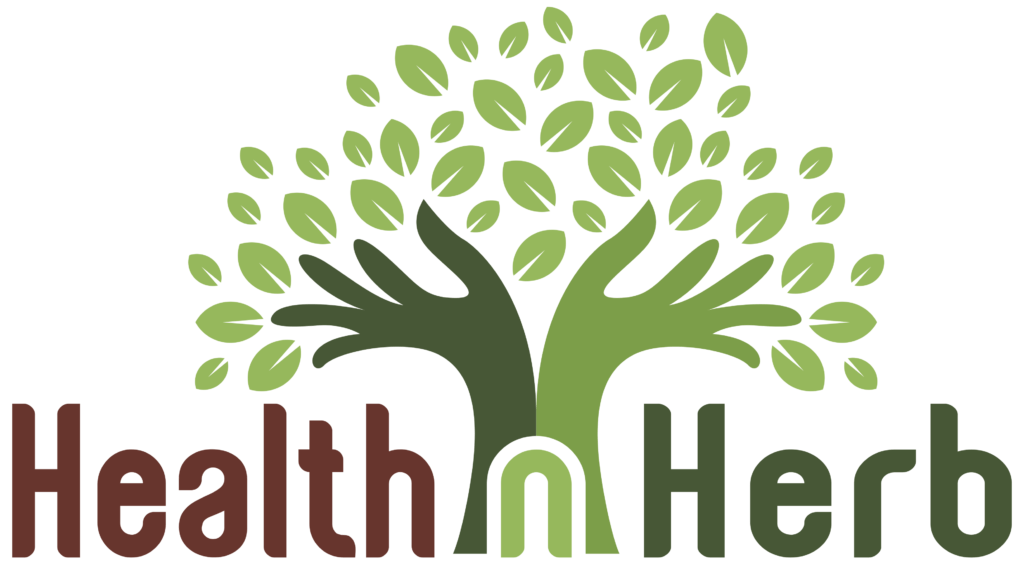

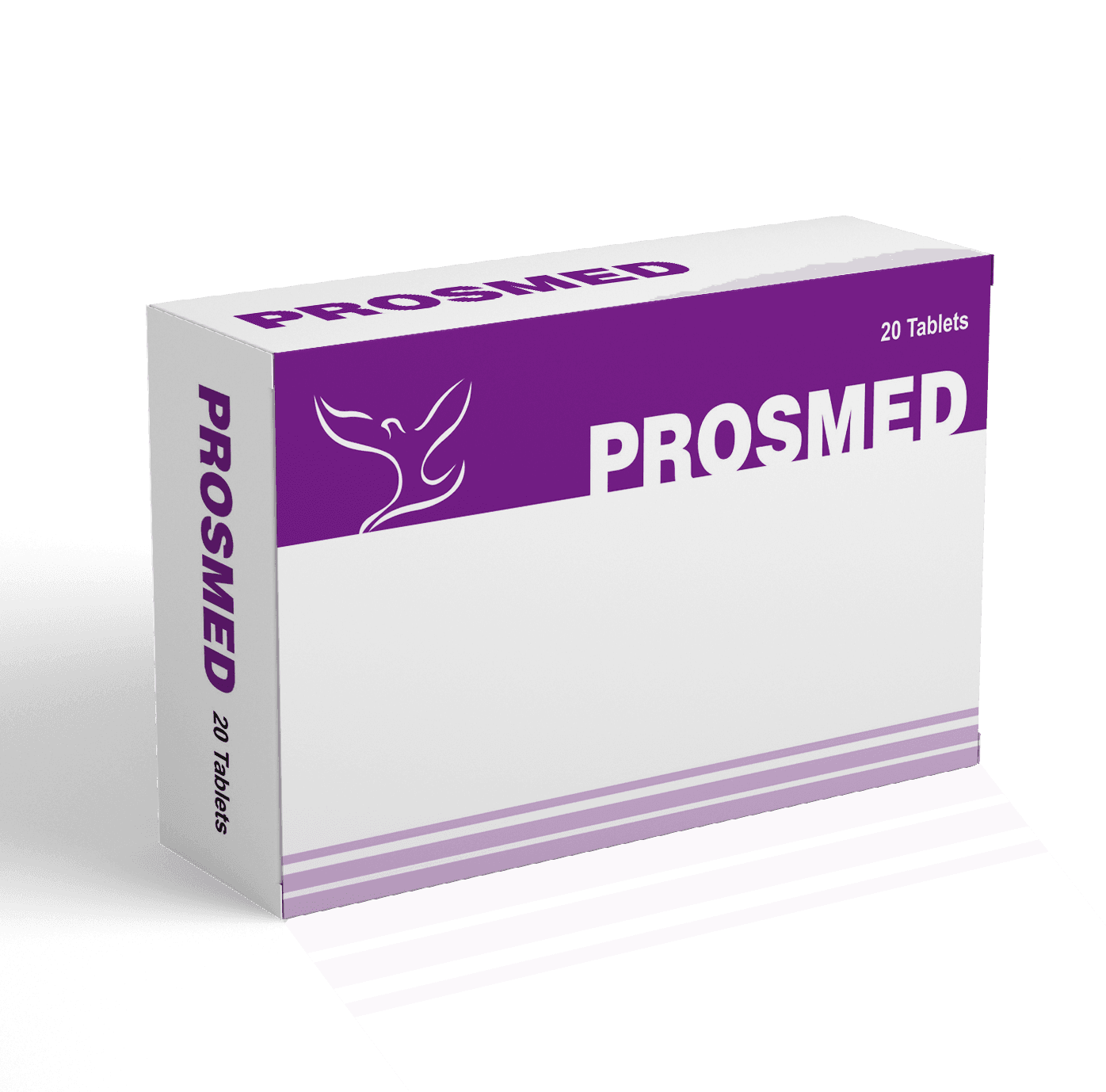






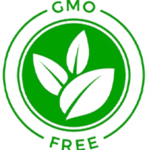



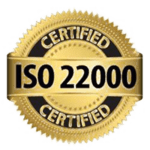

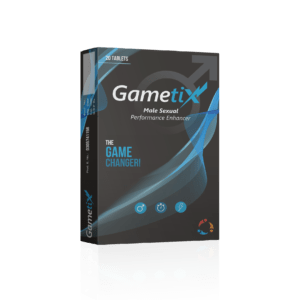







healthnherb@1 –
I have been using this for more than 10 years. great product
mishaal kabeer –
great product, timely delivery!